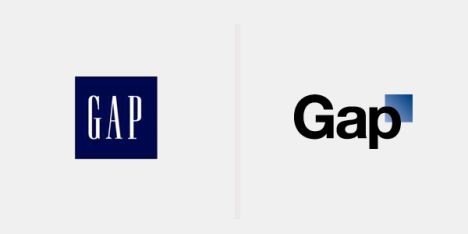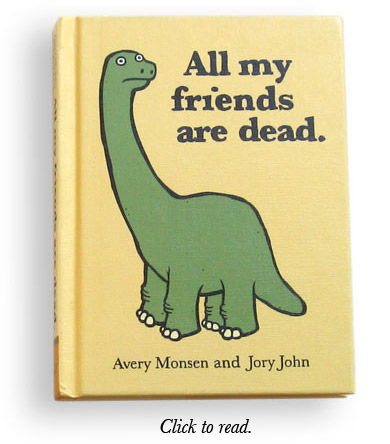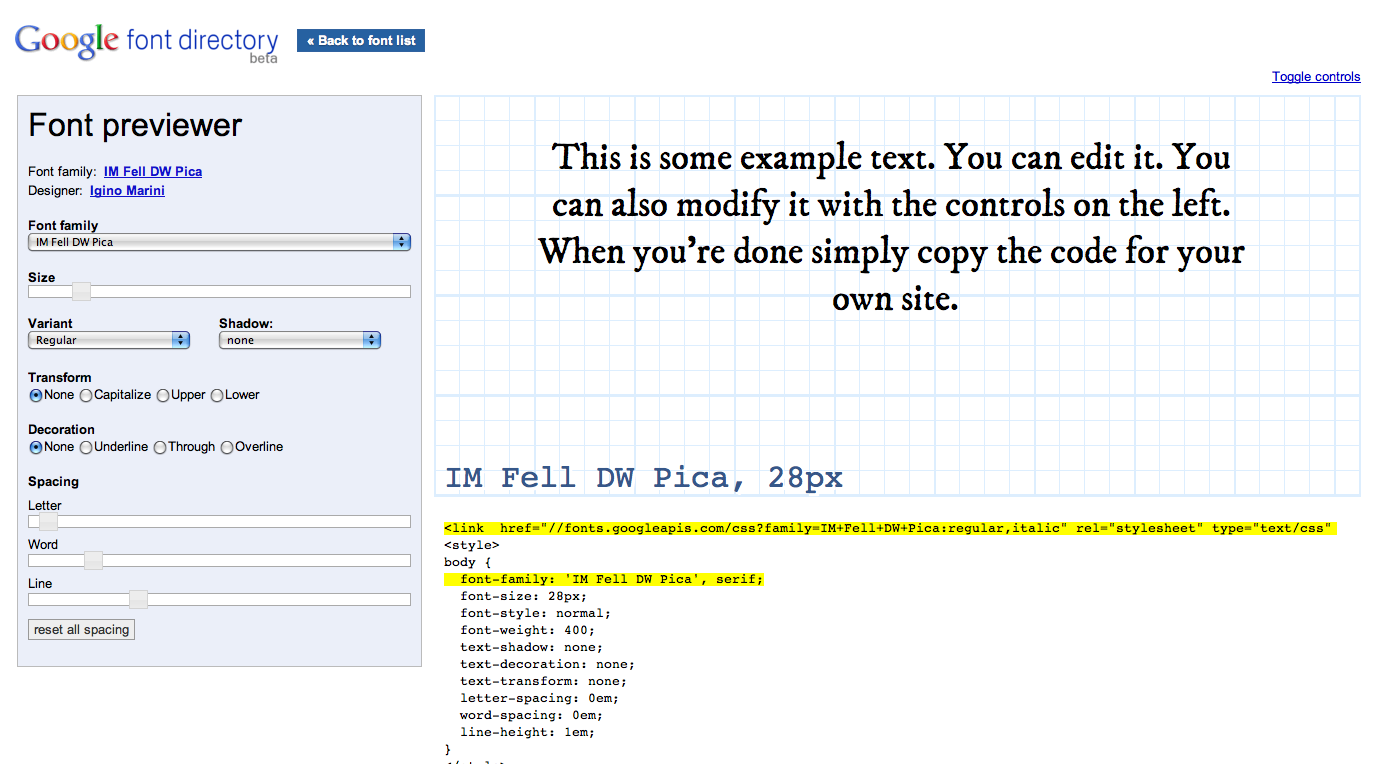New GAP logo
Money Money Money - “Gettin’ Money With a Mouse and a Wacom Pen (Fuck Comic Sans Fuck Papyrus, Too)”
Chatz
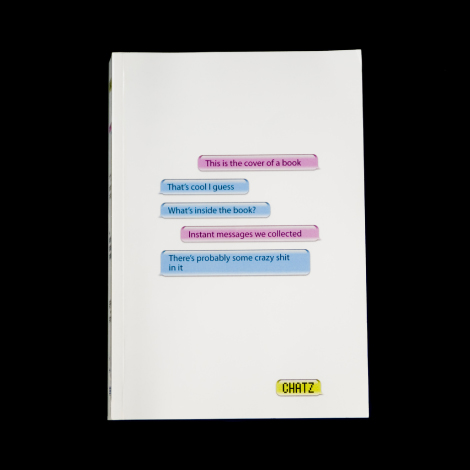
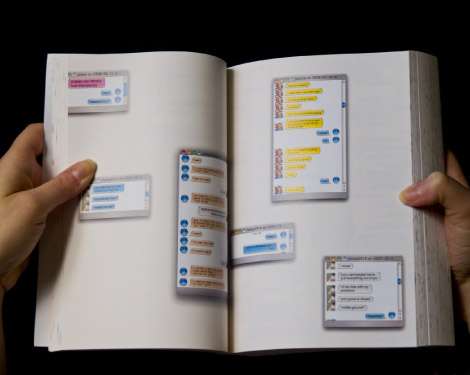
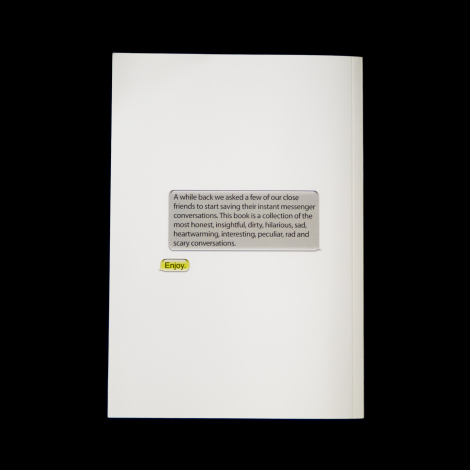 Thick book full of amusing collected iChats. Created for Dress Code.http://www.jeremiahbird.com/index.php?pid=9&comp=BOOK&pg=1
Thick book full of amusing collected iChats. Created for Dress Code.http://www.jeremiahbird.com/index.php?pid=9&comp=BOOK&pg=1
An Art Service
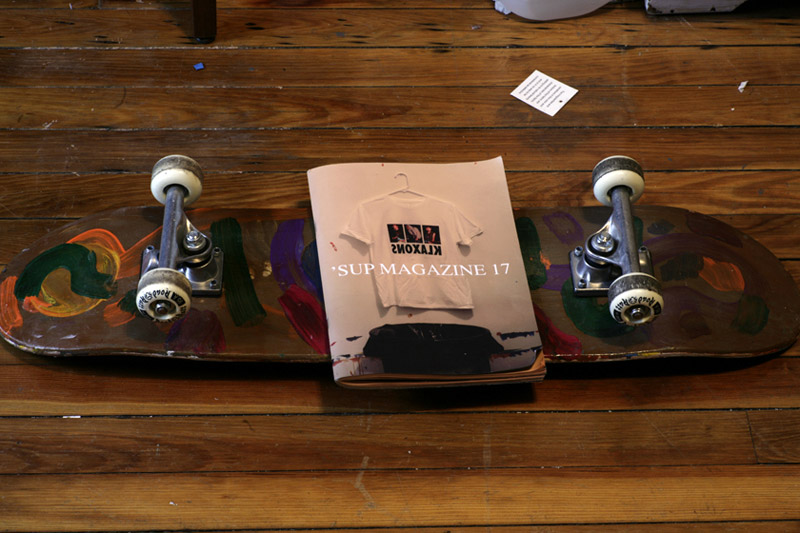 An Art Service is a graphic design and Art Direction Company located in New York City, working in Publications, Branding and Websites.http://www.anartservice.com/
An Art Service is a graphic design and Art Direction Company located in New York City, working in Publications, Branding and Websites.http://www.anartservice.com/
The optimism of modernity - recovering modern reasoning in typography
‘The optimism of modernity’ aims to tell the story of an incomplete and now almost forgotten project: that of modernity in British typography. This is envisaged as a matter not of style but of ‘design as a visible form of social philosophy’ and as an optimistic claim on enlightenment.
the project’s questions
The project spans a period of three or four decades, 1945–1979. Our provisional hypotheses are that:
- The products of modern typographic designing in Britain were accompanied by newly articulate forms of reasoning through practice.
- This reasoning was mainly about standardization and norms, explaining typographic processes, classification and description, and specification.
- Modernization, here as always, was double-edged.
- In order to exercise control through specification, professional designers needed information; this need, especially about typesetting systems, was made more urgent by the new challenges of computing in the graphic industries.
Toppled
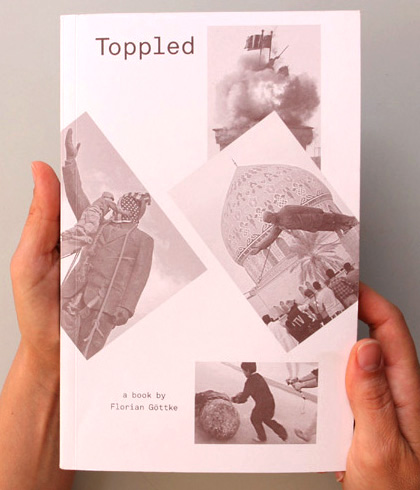
Toppled is based on hundreds of press and amateur photographs of the statues of Saddam Hussein, collected from the Internet. From this digital archive Göttke created this iconographic project, in which he analyzes and comments on the motives of the actors and the effects of the images from the viewpoints of politics, the media and image studies.
a new old grid system
A NEW method developed by Marcus Gärde to produce gridsystems based on old books and scrolls.During his research when writing his first book, The Way of Typography, Garde found out that old bibles and scrolls where not designed in the same manner as todays books – they where actually more complex!
In fact, the baselinegrid always fitted perfectly on the page. And even the gutter was in proportion to the lead. For exampel, in Gutenbergs B36 the gutter is 1/3 of the outer margin. The inner margin is 1/2 of the outer. The upper margin is 1/2 of the lower. The typographic area contains 6 modules and each of these modules are divided 6 times. That creates the 36 lines of text. In Gutenbergs first book, B42, the 6 modules where each divided 7 times. Therefore 42 lines of text.
After Marcus had examined the books, he created a step-to-step guide howe to create a perfect gridsystem,
where all the baselines fit inside the page and the gutter is based on the proportion of the lead.
He released this method in his book The Way of Typography august 2007.
edit: I realized that this is great if you have absolute control over the production, but if your printer doesn’t do full-bleed perfectly, you’re wasting a lot of time.
What A Book Is
A book is a sequence of spaces.
Each of these spaces is perceived at a different moment - a book is also a sequence of moments.
A book is not a case of words, nor a bag of words, nor a bearer of words.
A writer, contrary to the popular opinion, does not write books.
A writer writes texts.
The fact, that a text is contained in a book, comes only from the dimensions of such a text; or, in the case of a series of short texts (poems, for instance), from their number.
A literary (prose) text contained in a book ignores the fact that the book is an autonomous space-time sequence.
A series of more or less short texts (poems or other) distributed through a book following any particular ordering reveals the sequential nature of the book.
It reveals it, perhaps uses it; but it does not incorporate it or assimilate it.
Written language is a sequence of signs expanding within the space; the reading of which occurs in the time.
A book is a space-time sequence.
Books existed originally as containers of (literary) texts.
But books, seen as autonomous realities, can contain any (written) language, not only literary language, or even any other system of signs.
Among languages, literary language (prose and poetry) is not the best fitted to the nature of books.
A book may be the accidental container of a text,. the structure of which is irrelevant to the book: these are the books of bookshops and libraries.
A book can also exist as an autonomous and self-sufficient form, including perhaps a text that emphasises that form, a text that is an organic part of that form: here begins the new art of making books.
In the old art the writer judges himself as being not responsible for the real book. He writes the text. The rest is done by the servants, the artisans, the workers, the others.
In the new art writing a text is only the first link in the chain going from the writer to the reader. In the new art the writer assumes the responsibility for the whole process.
In the old art the writer writes texts.
In the new art the writer makes books.
To make a book is to actualize its ideal space-time sequence by means of the creation of a parallel sequence of signs, be it linguistic or other.http://www.artpool.hu/bookwork/Carrion.html
Chintelligens OFFICIAL debut single “Mika Boogie”
Anti Design Festival by Neville Brody
We are living in an age where millions of colours became 256. Difference is the enemy. Generic culture hypnotises us all into generic patterns, where control is visibly invisible. Danger is replaced by fear. New means upgrade. Risk is obsolete. Art made money stupid, and money made us fools. We welcome no_use, no_function and no_fear. Anarchy, crash and burn, the new awaits.
From Learning to Earning, and now to Yearning, we have forgotten why we are here. We have lost touch with what made us tick, the fire of creative possibility that once consumed us from within.
Revolutionary thought is but a distant memory. I grew up as part of a generation that thought it could help improve society; that our sole function was to be conscious and to spread that consciousness through creative awareness, exploration, observation and questioning.
This generation was replaced by the Thatcher/Reagan paradigm of Culture=Money. Thinkers became earners, Creatives became entertainers, and a whole dumbed-down generation now feels entitled to success and profit without having to work or think too much.
We are now left with a spiritual hollowness. The belief systems of consumption and commodity have been exposed as empty. Revolution is a distant echo lost in the white noise, and religion has been largely subsumed by globalisation. Virtual experiences have replaced human touch. Analogue culture is now the exotic.
We have managed to create for our children, perhaps for the first time in history, a future which is less hopeful than the one we live in today.
Deep Freeze
The house of credit cards has now collapsed. For 25 years we have been in a state of Deep Freeze. We have somehow denied ourselves permission to remember what it was like before the Big Bang of banking deregulation. Schools became businesses and hospitals became profit centres. Art for art’s sake was sacrificed for entertainment and bums on seats. Ideas became clichŽs and anything different was viewed with suspicion and disdain.
We have traded Freedom for Peace. What we need is Liberation.
Free Me From Freedom
As the Lehman Brothers collapsed, so a new era is signalled and the baton is passed on again. Mankind has the opportunity now to reclaim the cultural high-ground and risk something new, a creative breach in the barrier of exclusion that can allow some real growth and evolution, like a bright light shining through the cracks of a crumbling wall.
The line of Dangerous Ideas had been interrupted and the path can be found again.
Dangerous Ideas
When was the last time you encountered any culture that you can say was really dangerous, that actually challenged anything?
Animated Typeface
Moshun from Jeroen Krielaars on Vimeo.
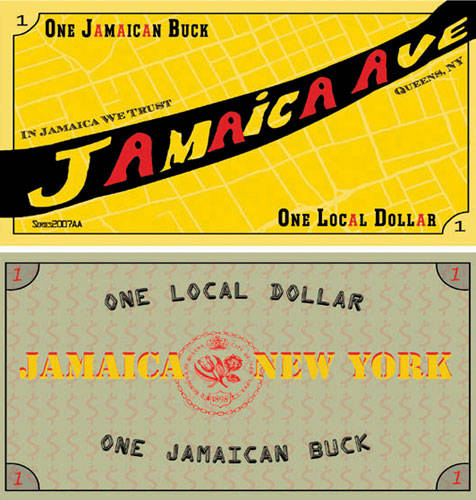
In September of 2007, we introduced Jamaican Bucks, a form of local currency for Jamaica, Queens, and posed two questions: 1. What if money made on Jamaica Avenue stayed in Jamaica; and 2. What if Jamaica had its own money?
We distributed the Bucks by creating a public photo booth where we paid participants five (5) Jamaican Bucks for their portrait, resulting in a collection of nearly 100 portraits.
The Bucks were redeemable at designated vendors for a limited time on Jamaica Avenue, a retail thoroughfare.
The goal for Counter Culture Cash was to reinforce the local economy and build connections based on trust and mutual exchange among the people in Jamaica.
This project was exhibited as part of Jamaica Flux, 2007 which was organized by Jamaica Center for Arts & Learning. It included 25 artists and ran for a period of two months.
New Media at Merz Akademie
Interface Design BA program at Merz Akademie is a proper place to study web and interface design, spacial interaction and virtual reality, computational design, digital culture, new media arts. Studies are guided by Prof. Olia Lialina, pioneer of net art and new media researcher, and Prof. Mario Doulis, interface designer and VR expert.
Among our teachers are world famous theoreticians, designers, developers, musicians and artists: Johannes Auer, Roland Blach, Dragan Espenschied, Jana Frank, Alexander Goetz, Yun Chul Kim, Marius Watz, Guenter Wenzel and others.
Our graduates are known for being very special, because they can see over hypes and trends, they know how to master digital environments, they are innovative as designers and artists. The main purpose of this site is to present their works. Btw, our assistant, Joerg Frohnmayer, author of the most reasonable VR application in the world was a student of Merz Akademie as well.
This site is an attempt to combine a blog about the pathway’s life life and events with an archive of student works and semester projects.
This is pretty cool, Street Fighter diagram: http://nm.merz-akademie.de/~alexander.schlegel/SF2_Facts3
and this: http://streetfighter-diagram.6x.to/
Michael Bierut: 5 Secrets from 86 Notebooks
Design is History
As a designer it is important to understand where design came from, how it developed, and who shaped its evolution. The more exposure you have to past, current and future design trends, styles and designers, the larger your problem-solving toolkit. The larger your toolkit, the more effective of a designer you can be.
Part of the graduate thesis of designer Dominic Flask, this site was created as a teaching tool for young designers just beginning to explore graphic design and as a reference tool for all designers. It is supposed to provide brief overviews of a wide range of topics rather than an in-depth study of only a few. It is a constantly evolving, changing, expanding reference library.
Meet CCA Graphic Design Alums G. Dan Covert and Andre Andreev
Google Font directory
Writing in the Age of Email
Since World War II, composition programs in America have successively embraced three distinct (though sometimes overlapping) models of how writing should be taught, reflecting, in turn, three different assumptions about the goal of student writing. The first, a traditional model that has roots in eighteenth and nineteenth century classical rhetoric, takes the goal of writing to be imparting knowledge. Accordingly, writers are trained to focus on the “product” they are generating, with the expected attention to details of written mechanics and style. This model has persisted throughout the second half of the twentieth century, although with decreasing popularity.
The second, so-called “process” model, emphasizes the act of writing more than the written result. Students are encouraged to do considerable preplanning (”prewriting”) as well as multiple drafts, but the prescriptive mechanics of written style are de-emphasized. In both the traditional and the process models, writing is seen as an individual activity. However, while the traditional model encourages objective presentation (”It appears that . . ,” “One might argue that . . .”), the process model allows for more individual expression (”I think . . .”). In essence, the process model embraces the self-expression component of progressive education.
The third model is more social/dialogic. The purpose of writing is no longer expression of objective information or self-expression but what has come to be called the social construction of knowledge (see, e.g., Clark, 1990: Chapter 1). Rather than being a solitary activity, writing is envisioned as a group conversation, utilizing not only peer review but even group composition. Conceptually, the social/dialogic model incorporates progressive education’s views of schools as social (and socializing) institutions which, in Dewey¼s words, lead children to use their “own powers for social ends” (Lang, 1898:9).
Copyright © _dreams. All rights reserved.

